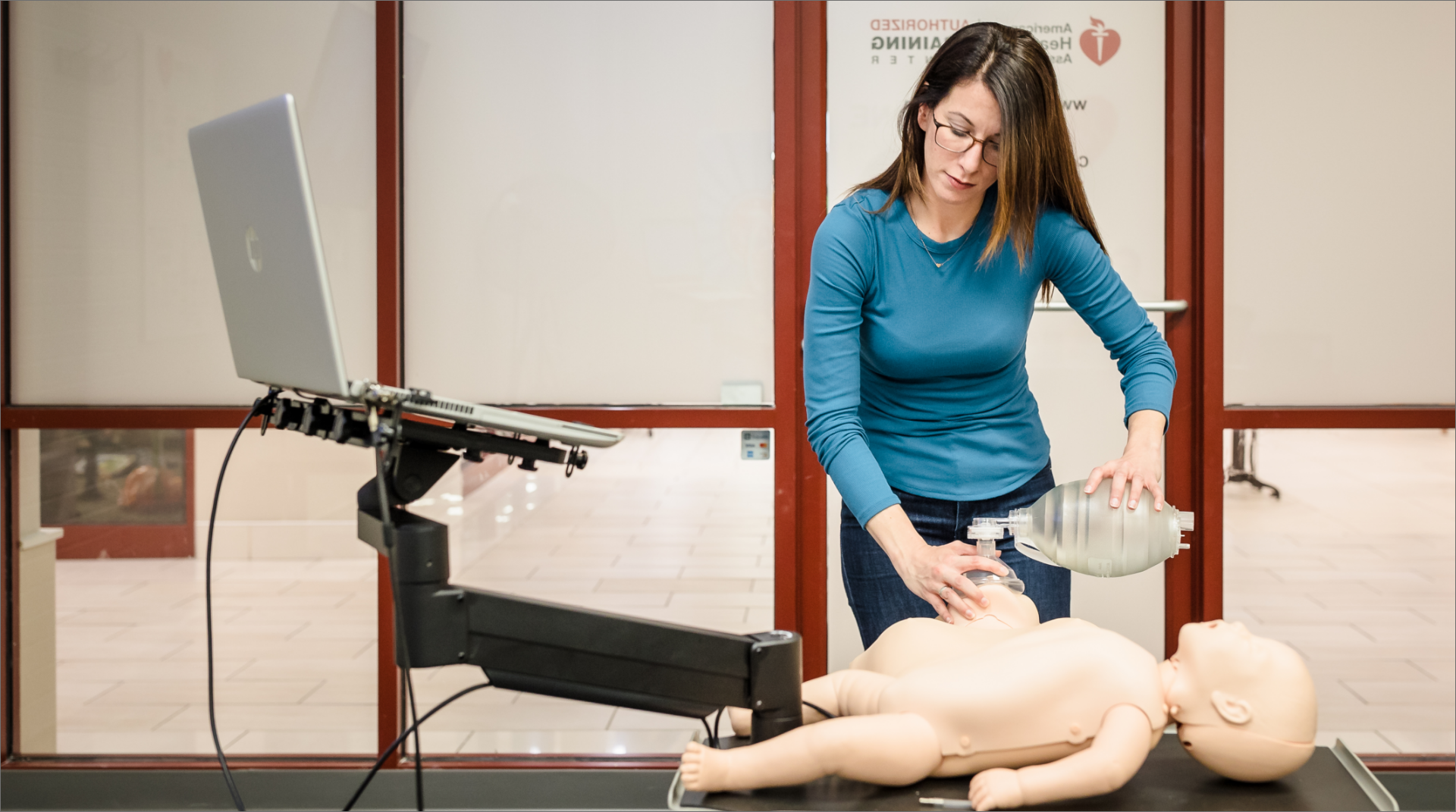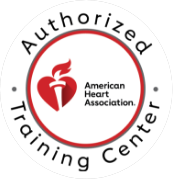

CPR Resource Center
The most comprehensive library of emergency training resources — including videos, articles, downloads, and more.


The most comprehensive library of emergency training resources — including videos, articles, downloads, and more.
Emergency Cardiac Care News Digest is an assortment of current events and news related to emergency cardiac care and resuscitation. Produced by Code One Training Solutions, Emergency Cardiac Care News Digest is published every Friday throughout the year.

The limits of the possible can only be defined by going beyond them into the impossible.
Arthur C. Clarke
This thought-provoking quote delves into the concept of human potential and innovation, emphasizing that the boundaries of what can be achieved are not set in stone but rather are defined by our willingness to push past the perceived limits.
By Stephanie Kuzydym of the Courier Journal
One hundred cardiac arrest thought leaders — from the U.S., Canada, Ireland, the Netherlands, Spain and Australia — gathered in a Philadelphia hotel conference room in November, just days before the American Heart Association’s Science Symposium, known as the Super Bowl of Science.
The group included physicians, social scientists, AED manufacturers, government officials and more, but they were all there to help guide the association on AED priorities for the next decade.
See the full story: https://www.usatoday.com/story/sports/nfl/bills/2024/01/02/year-since-damar-hamlin-american-heart-association-wants-aeds-common/72081712007/
The Citizen CPR Foundation has created a cardiac arrest quality improvement model that is commonly referred to as HEARTSafe Community.
This community-based quality improvement model focuses on the importance of leadership, collaboration, strategy and tactics in improving cardiac arrest survival in the community through the systematic implementation of 13 specific recommendations or process measures that are based on current resuscitation science and innovative best practices.
Visit the Citizen CPR Foundation and explore a wide variety of resources from world-recognized organizations and industry partners, including scientific statements, videos and other resources organized in a free web-based guide.
More: https://citizencpr.org/heartsafe/
A number of states require places like gyms and sports arenas to keep automated external defibrillators (AEDs) on hand, but those laws have made little difference in how often the life-saving devices are deployed in emergencies, a new JAMA Internal Medicine study finds.
Why it matters: AEDs, which provide an electric shock that can restore normal heart rhythm, can greatly improve the chances of survival from cardiac arrest if bystanders act quickly to use them.
The big picture: Defibrillators gained national attention a year ago when one was used along with CPR to revive Buffalo Bills safety Damar Hamlin after he collapsed on the field during a nationally televised football game.
Advocates around the country have since called for states to require more AEDs to be located near sports venues and schools, as well as for increased cardiac screening of athletes.
Led by the University of Texas Southwestern Medical Center, researchers examined 9,290 cases of cardiac arrests that occurred at recreational facilities between 2013 and 2021 in 13 states with AED laws and 27 states without laws.
Learn more: https://www.axios.com/2024/01/03/cardiac-arrest-aed-defibrilator-states
For the fans, Damar Hamlin’s recovery from the cardiac arrest he suffered at the Buffalo Bills-Cincinnati Bengals matchup a year ago was nothing short of miraculous.
But Hamlin’s recovery was all the more stunning in light of what’s known about surviving sudden cardiac arrest: It is exceedingly rare. Roughly 350,000 people suffer an out-of-hospital-cardiac-arrest event each year, according to the American Heart Association, but only about 10% survive. However, if cardiopulmonary resuscitation (CPR) is performed immediately, the individual’s chance of survival can double, even triple.
In the months that followed Hamlin’s injury, that truth loomed large for Leslie J. Bisson, the UB sports medicine surgeon and Buffalo Bills medical director who leads the medical team that contributed to Hamlin’s incredible outcome.
“There was a lot of positive energy and thoughts and prayers for Damar and all of that is incredibly important, but at the end of the day, we had trained personnel with simple equipment and a plan,” he says, all of which significantly contributed to the ultimate positive outcome.
Access the full story: https://www.buffalo.edu/ubnow/stories/2024/01/bisson-cpr-aed-training.html
BARTOW, Fla. — A Sunday from last May is still burned in Monique Davis’ memory.
“I still get panic attacks from it all the time,” said Davis. “I still have nightmares about it.”
She and her four-year-old son, Bryar, were enjoying a beach day at Sebastian Inlet in Brevard County with their neighbors, friends, and family members from Alturas, which is located just outside Bartow.
After only about an hour of enjoying the beach, it happened.
“And it all happened so fast,” she said.
Davis said she turned her back for just a second to apply sunscreen when Bryar disappeared into the water.
What’s the best use of extracorporeal CPR? What steps for patients without ST elevation? An AHA statement has advice.
The American Heart Association (AHA) has released a new scientific statement that clarifies the role of the cath lab in managing patients who’ve experienced out-of-hospital cardiac arrest (OHCA), both those who are resuscitated and those with ongoing arrest.
“The cardiac catheterization laboratory is an important link in the coordinated Chain of Survival for individuals with OHCA,” Jacqueline E. Tamis-Holland, MD (Cleveland Clinic, OH), and colleagues write. The cath lab “can provide a useful setting to resuscitate and stabilize patients with sudden cardiac arrest from many different cardiac causes, but it has a unique importance in the treatment of OHCA resulting from underlying coronary artery disease.”
OHCA is often fatal, with fewer than 10% of patients surviving to hospital discharge, and accounts for around half of all cardiovascular deaths. The best strategies for treating the condition are still evolving.
Tamis-Holland, who chaired the new statement, told TCTMD the document is timely. Although it’s not the first devoted to what the cath lab brings to OHCA care, “there’s been a lot of data, particularly on the patients with no ST elevation on their ECG and [those] with ongoing arrest,” she commented. “We felt it was important to make a statement on when the cath lab should be utilized, what the advantages of the cath lab are in helping these patients, and when we don’t necessarily have to take these patients to the cath lab immediately because the outcome won’t change.”
Read on: https://www.tctmd.com/news/aha-details-cath-labs-role-out-hospital-cardiac-arrest
THE state government has begun installing Automatic External Defibrillators (AEDs) on V/Line trains to provide vital assistance to passengers in case of an emergency.
Acting Minister for Public and Active Transport Steve Dimopoulos announced the rollout of AEDs is underway, with devices which can be operated by either V/Line staff or members of the public to help save lives.
“The installation of Automatic External Defibrillators on board our trains is just another example of how we are making the commute safer for passengers,” he said.
“Having defibrillators on V/Line trains will significantly increase a person’s chance of surviving an emergency.”
Already 90 AEDs have been installed on V/Line trains, including 65 on VLocity trains – with many more to be progressively rolled out over the coming months.
Defibrillators on trains will help ensure critical assistance can be given to a person on board in the vital first few minutes after an incident of cardiac arrest.
Ambulance Victoria data shows that combining CPR with defibrillation can increase a person’s survival rate by up to 70 per cent.
Source: https://latrobevalleyexpress.com.au/news/2024/01/03/life-saving-technology-added-to-v-line-trains/
Sudden cardiac arrest is rare in young people. When it happens, it’s often to young athletes during competition or practice. But sudden cardiac arrest can happen at any time to any young person, even if they aren’t in sports.
According to the American Heart Association, about 9 in 10 people who get a shock from an AED within the first minute of cardiac arrest live. For every minute that passes in cardiac arrest, the chance of survival goes down by 10%.
The American Academy of Pediatrics advises all schools to place AEDs both inside and outside on school grounds as part of a cardiac emergency response plan. It should take no more than two minutes to get an AED and return to the victim.
At least 20 states plus the District of Columbia require AEDs to be in all public schools. In California, schools that offer sports must supply AEDs too.
Even if your state doesn’t mandate AEDs, you can still be an advocate for getting them at your school. Having AEDs available may just save someone’s life.
Full article: https://www.chicagotribune.com/people/health/schools-cardiac-arrest-20240102-iectgseklfg5padfpaxbtzrjsy-story.html
The base of an AED device at Sonoma Plaza was “sheared off,” leaving the life-saving device inoperable following a vandalism on Saturday.
Sonoma police are looking for a suspect who kicked off a public automated external defibrillator( AED) device at Sonoma Plaza overnight between Dec. 22 and Dec. 23, according to Sonoma Police Sgt. Scott McKinnon.
Deputies received a call from a city worker at 9 a.m. on Thursday for the reported vandalism. The base of the AED device was “sheared off,” leaving it without power and functionally useless. Several empty garbage bins had also been turned over, McKinnon said.
Deputies documented three muddy boot prints showing the location of the kicks used to damage the device, McKinnon said.
Deputies are reviewing video surveillance from Sonoma Plaza to identify a potential suspect.
Source: https://www.sonomanews.com/article/news/sonoma-police-investigate-vandalism-of-aed-device/
SECAUCUS, NJ — On Dec. 16, these three Secaucus police officers saved the life of a man who stopped breathing while suffering a cardiac event at the LA Fitness.
The man’s life was likely saved because a bystander immediately started CPR on him, which the officers took over when they got there.
They also had to use an AED machine four times on the man to regain his heartbeat and pulse.
Read on: https://patch.com/new-jersey/secaucus/3-secaucus-police-officers-bystander-save-mans-life-la-fitness
Help Me Find a Course